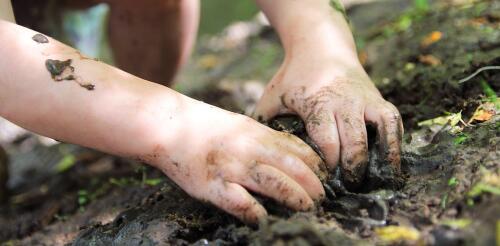Curious Kids
Curious Kids is a series for children of all ages. If you have a question you’d like an expert to answer, send it to curiouskidsus@theconversation.com. Why aren’t there solar-powered cars? – Emma, age 16, Springville, Utah Solar cars exist. The best place to see them is the World Solar Challenge, a race that’s held every two years in Australia. Competitors have to drive about 1,870 miles (3,000 kilometers), from Darwin on the country’s north coast to Adelaide on its south coast, using only energy from the Sun. Many cars that compete in this race look more like amusement park rides or science fiction vehicles than the cars you see on the road. That tells you something about why solar cars aren’t an option for everyday travel, at least not yet. Collecting enough sunlight While a lot of sunlight falls on Earth during the day, the light becomes scattered as...
Curious Kids is a series for children of all ages. If you have a question you’d like an expert to answer, send it to curiouskidsus@theconversation.com. What is dirt? – Belle and Ryatt, ages 7 and 5, Keystone, South Dakota When you think about dirt, you might picture the rock dust that gets on your pants. But there’s so much more going on in the ground under our feet. When I began studying soil, I was amazed at how much of it is actually alive. Soil is teeming with life, and not just the earthworms that you see on rainy days. Keeping this vibrant world healthy is crucial for food, forests and flowers to grow and for the animals that live in the ground to thrive. Here’s a closer look at what’s down there and how it all works together. Soil is a vibrant ecosystem. Gabriel Jimenez via Unsplash, CC BY-SA...
Curious Kids is a series for children of all ages. If you have a question you’d like an expert to answer, send it to curiouskidsus@theconversation.com. Why does a leap year have 366 days? Does the Earth move slower every four years? – Aarush, age 8, Milpitas, California You may be used to hearing that it takes the Earth 365 days to make a full lap, but that journey actually lasts about 365 and a quarter days. Leap years help to keep the 12-month calendar matched up with Earth’s movement around the Sun. After four years, those leftover hours add up to a whole day. In a leap year, we add this extra day to the month of February, making it 29 days long instead of the usual 28. The idea of an annual catch-up dates back to ancient Rome, where people had a calendar with 355 days instead of 365 because it was based on cycles and phases of the Moon. They noticed that their calenda...
Curious Kids is a series for children of all ages. If you have a question you’d like an expert to answer, send it to curiouskidsus@theconversation.com. How do crystals form? – Alyssa Marie, age 5, New Mexico Scientifically speaking, the term “crystal” refers to any solid that has an ordered chemical structure. This means that its parts are arranged in a precisely ordered pattern, like bricks in a wall. The “bricks” can be cubes or more complex shapes. I’m an Earth scientist and a teacher, so I spend a lot of time thinking about minerals. These are solid substances that are found naturally in the ground and can’t be broken down further into different materials other than their constituent atoms. Rocks are mixtures of different minerals. All minerals are crystals, but not all crystals are minerals. Most rock shops sell mineral crystals that occ...
Curious Kids is a series for children of all ages. If you have a question you’d like an expert to answer, send it to curiouskidsus@theconversation.com. How do spices get their flavor? – Liam, age 6, San Francisco I love savory and spicy foods. Lasagna laden with basil and oregano. Beautifully golden curries infused with turmeric, or rice flavored with saffron. I can’t pass up a cinnamon-dusted snickerdoodle cookie. And some of my favorite childhood memories center on my mom’s nutmeg-infused sweet potato pie. These ingredients come from many different plants and distinct plant parts, including leaves, seeds, bark and plant oils. Their flavors are created by accumulated phytochemicals – substances the plants make. “Phyto” comes from the Latin word for plant. Plants produce chemicals for different purposes. In my recent book, “Lessons from Plants...




